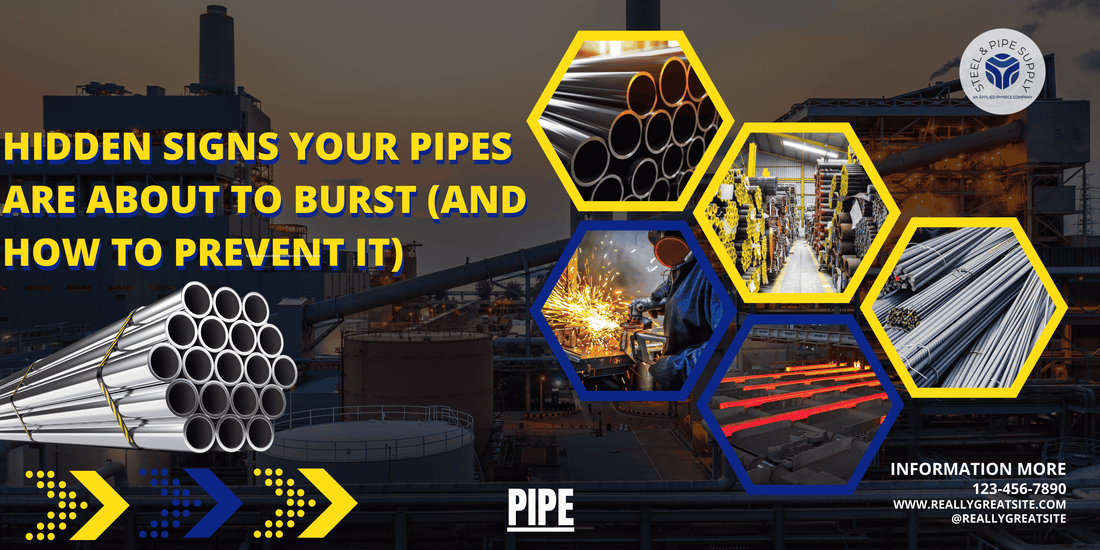
Hidden Signs Your Pipes Are About to Burst (And How to Prevent It)
Share
Introduction
One of the first indicators that your plumbing system may be in distress is the presence of unusual noises emanating from your pipes. Sounds such as banging, clanging, or gurgling can signal a variety of issues, including air trapped in the pipes or loose fittings. These noises often occur when water is flowing through the system, and they can indicate that there is a significant change in pressure or that the pipes are not securely fastened.
If left unaddressed, these sounds can escalate into more severe problems, including leaks or even bursts. In addition to auditory signs, vibrations can also be a red flag. If you notice that your pipes are vibrating when water is running, it may suggest that there is an issue with water hammer, a phenomenon caused by sudden changes in water flow.
This can lead to stress on the pipe joints and connections, increasing the risk of failure. Regularly monitoring your plumbing for these signs can help you catch potential issues early, allowing for timely repairs and preventing catastrophic failures.
Key Takeaways
- Unusual noises and vibrations can be a sign that your pipes are about to burst, so pay attention to any new sounds coming from your plumbing system.
- Decreased water pressure could indicate a potential pipe burst, so be on the lookout for any sudden changes in water flow.
- Rusty or discolored water coming from your taps may be a hidden sign of pipe deterioration, so don't ignore any changes in water color.
- Puddles or water stains around your home could be a sign of a hidden pipe leak, so investigate any unexplained water accumulation.
- Strange odors coming from your drains or pipes could indicate a potential issue, so be aware of any unusual smells in your plumbing system.
Decreased Water Pressure
A noticeable drop in water pressure can be an alarming sign that something is amiss within your plumbing system. When pipes begin to corrode or accumulate mineral deposits, the flow of water can be restricted, leading to lower pressure. This can manifest as weak streams from faucets or showers, making everyday tasks like washing dishes or taking a shower frustrating.
In some cases, decreased water pressure may also indicate a leak somewhere in the system, which could eventually lead to a burst pipe if not addressed promptly. To assess whether decreased water pressure is a symptom of a larger issue, homeowners should check multiple fixtures throughout the house. If the problem is isolated to one area, it may be a localized issue such as a clogged aerator or a malfunctioning valve.
However, if multiple outlets are affected, it could point to a more systemic problem within the plumbing infrastructure. Regular maintenance and inspections can help identify these issues before they escalate into more significant concerns.
Rusty or Discolored Water
The appearance of rusty or discolored water is another critical warning sign that your pipes may be on the verge of failure. When iron pipes corrode, they can leach rust particles into the water supply, resulting in a brownish tint. This not only affects the aesthetic quality of your water but can also pose health risks if left unaddressed.
Discolored water may indicate that your pipes are deteriorating and could potentially burst if the corrosion continues unchecked. In addition to rust, other discolorations may arise from mineral buildup or sediment accumulation within the pipes. For instance, a yellow or orange hue could suggest the presence of iron oxide, while a greenish tint might indicate copper corrosion.
Homeowners should take these signs seriously and consider having their plumbing system inspected by a professional. Replacing aging pipes with modern materials can significantly reduce the risk of discolored water and enhance overall water quality.
Puddles or Water Stains
| Location | Number of Puddles | Size of Puddles | Severity of Water Stains |
|---|---|---|---|
| Living Room | 3 | Small | Moderate |
| Kitchen | 1 | Medium | Severe |
| Bedroom | 2 | Large | Minor |
Finding unexplained puddles or water stains in your home can be a clear indication that your plumbing system is compromised. These signs often suggest that there is a leak somewhere within the pipes, which could lead to more severe damage if not addressed promptly. Water pooling around fixtures or on floors can cause structural damage over time and create an environment conducive to mold growth, posing health risks to occupants.
Water stains on walls or ceilings are equally concerning and may indicate that water is seeping through from hidden leaks within the walls or ceilings. Homeowners should investigate these stains thoroughly, as they can provide clues about the location and severity of the leak. In some cases, it may be necessary to consult with a plumbing professional who can conduct a thorough inspection using specialized equipment to locate hidden leaks and recommend appropriate repairs.
Strange Odors
Unpleasant odors emanating from your plumbing system can serve as an important warning sign that something is amiss. A foul smell resembling rotten eggs may indicate the presence of hydrogen sulfide gas, which can occur when bacteria break down organic matter in stagnant water within pipes. This not only poses health risks but also suggests that there may be a blockage or buildup within the plumbing system that requires immediate attention.
Additionally, musty or moldy odors can signal moisture accumulation due to leaks or inadequate ventilation in areas where pipes are located. These odors should not be ignored, as they can lead to more significant issues such as mold growth and structural damage over time. Homeowners should take proactive measures to address any strange smells by investigating their source and consulting with professionals if necessary.
High Water Bills
An unexpected spike in your water bill can be one of the most telling signs that your plumbing system is experiencing issues. If you notice a significant increase in usage without any corresponding change in habits—such as increased laundry loads or additional guests—this could indicate a hidden leak somewhere in your plumbing system. Leaks can waste thousands of gallons of water over time, leading not only to higher bills but also to potential damage to your property.
To address this issue, homeowners should regularly monitor their water bills and consider conducting a thorough inspection of their plumbing system for leaks. Simple measures such as checking for dripping faucets, running toilets, and visible signs of moisture around pipes can help identify potential problems early on. If necessary, enlisting the help of a professional plumber can provide peace of mind and ensure that any leaks are promptly repaired.
Age of Pipes and Maintenance History
The age of your plumbing system plays a crucial role in its overall health and reliability. Older pipes made from materials such as galvanized steel or cast iron are more susceptible to corrosion and deterioration over time. If your home has aging plumbing infrastructure, it is essential to be vigilant for signs of wear and tear that could lead to pipe bursts.
Regular inspections and maintenance can help extend the life of older pipes but may ultimately necessitate replacement if they show significant signs of aging. Additionally, understanding the maintenance history of your plumbing system is vital for assessing its current condition. If previous owners neglected regular upkeep or if you have not performed routine checks yourself, it may be time to schedule an inspection with a qualified plumber.
Keeping detailed records of any repairs or replacements made over the years can also provide valuable insight into potential future issues and help you make informed decisions about necessary upgrades or replacements.
Conclusion
Recognizing the subtle signs of impending pipe bursts can save you from costly repairs and water damage. By regularly inspecting your plumbing system, maintaining proper insulation, and addressing minor issues promptly, you can extend the life of your pipes and ensure a safe and efficient water supply in your home. Remember, proactive maintenance is key to preventing plumbing disasters.

